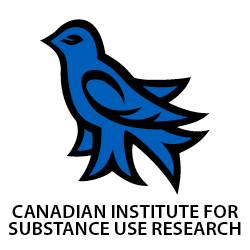So, what does the small print at the bottom of your rental agreement say? What if it specified that you could not use alcohol or any substances as a condition of renting? Would you sign anyway, knowing there are not a lot of places you can afford to rent? Maybe that doesn’t matter because you don’t use drugs and alcohol at all, not even a drink now and then. But what if you have friends over — could they have a beer or glass of wine? Very few of us are expected to be abstinent in the privacy of our own homes; rather, we are expected to pay our rent (or mortgage) and respect our neighbours.
We would guess that few rental agreements would have such fine print. However, it is common for social housing programs to only accept people if they are abstinent. While this was the norm for a long time, the Housing First policy is now challenging that thinking. Housing First supports housing as a right and promotes the provision of housing that does not require or expect abstinence. This policy combines the provision of housing with a philosophy of harm reduction. There is a lot of evidence to support harm reduction strategies. There is also considerable evidence that a harm reduction approach to housing (Housing First) is effective in helping people who have been homeless to maintain their housing, maintain supports and access services according to their needs without causing harm to others1.
What does this look like? In Seattle, at 1811 Eastlake, men who were previously homeless with severe alcohol dependency were provided with housing and allowed to drink in their rooms. People living in regular rental units may access harm reduction services in the community to reduce and prevent harms from alcohol or other drug use. For those in social housing complexes, harm reduction services might be provided onsite. For example, managed alcohol programs located in housing programs provide people who are dependent on alcohol with regulated doses of alcohol. (A MAP program evaluation report for Thunder Bay MAP can be found at www.carbc.ca). The Dr. Peter Centre in Vancouver provides harm reduction supplies, onsite supervised injection services and housing for people who are HIV positive.
What does a community need to move housing programs towards a Housing First model that incorporates harm reduction? First, there has to be an available and adequate supply of affordable housing; that is the foundation. Second, an important principle of harm reduction is to actively engage people who are affected by substance use and homelessness in planning housing programs. Third, the public, housing agencies and healthcare providers need to know about and have access to harm reduction education. Lastly, Housing First and other housing programs need clearly developed harm reduction policies so that everyone is clear on the organization’s approach.
So, does every housing program need to incorporate harm reduction? Probably not, but everyone has the right to live by the same rules. Most of us already live in housing where we decide whether or not we consume substances in our home. So why not grant everyone the same choices and rights? Housing First shows us it can be done without endangering the rights of others.
Authors: Dr. Bernie Pauly, CARBC Scientist and Associate Professor, School of Nursing; Dan Reist, CARBC Assistant Director, Knowledge Exchange; and Lynne Belle-Isle, CARBC Graduate Student.
1. Pauly, B., et al., Housing and harm reduction: What is the role of harm reduction in addressing homelessness? International Journal of Drug Policy, 2013. 24(4): p. 284-290.
**Please note that the material presented here does not necessarily imply endorsement or agreement by individuals at the Centre for Addictions Research of BC




